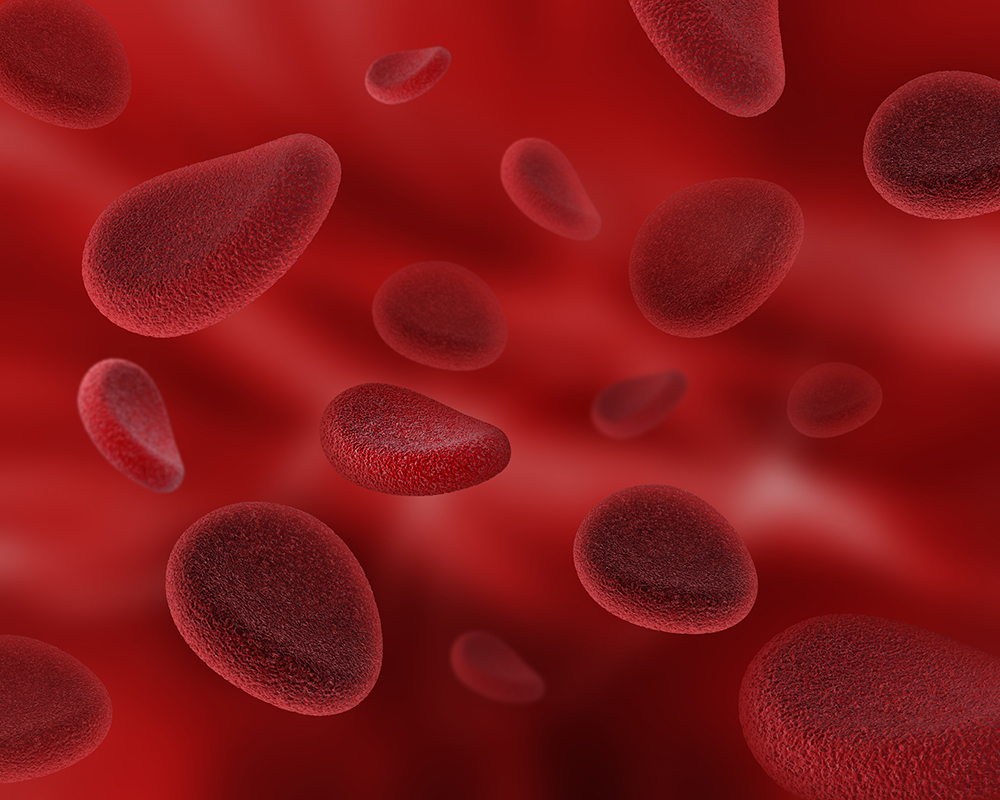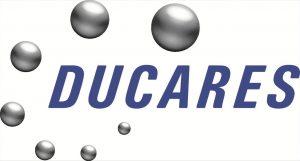Dr Anne Kleinnijenhuis – Developing Reliable Methods for Detecting Proteins
Proteins are a fundamental building block of all living organisms. Knowing how to detect and quantify them and monitor their interactions is therefore vital in numerous different fields, from food science to pharmacology. Dr Anne Kleinnijenhuis and his colleagues at TRISKELION in The Netherlands specialise in the development of innovative analytical techniques for measuring proteins. Recently, they have been designing improved methods that have far-reaching applications in food preparation, pharmaceuticals and blood analysis.
Merging Analytical Methods
TRISKELION, part of DUCARES B.V. in Utrecht, the Netherlands, is an innovative contract research organisation whose purpose is to develop methods and products that improve people’s health and wellbeing. With clients in the pharmaceutical, food, feed and agrochemical industries, TRISKELION recognises that health and safety of humans, animals and the environment are all interconnected.
Dr Anne Kleinnijenhuis is a senior scientist at TRISKELION, who specialises in the development of Liquid Chromatography Mass Spectrometry (LC-MS) techniques for detecting proteins. His team has developed innovative LC-MS methods that can detect a range of proteins found in food and medications.
LC-MS is a combination of two techniques: liquid chromatography (LC) and mass spectrometry (MS). With LC, the sample mixture is separated into its constituent components and the relative amount of each component can be measured. The underlying mechanism behind LC is similar to how the different pigments in a spot of dried ink can become separated by water, migrating across a piece of paper. As the water spreads out over the ink on dry paper, it pulls the ink along with it and separates the ink into coloured bands, each of which represents a different component.
Each component is then processed at the next stage, namely MS, to determine the mass of each of the molecules present. The MS instrument works by turning the sample received into a cloud of charged, gaseous particles. These particles are then fired inside electric and/or magnetic fields towards a detector. An operator can then change various instrument settings to control how particles reach the detector and ultimately use the instrument settings to deduce the mass of the particle.

Applications in Food Science
Consumers with specific dietary requirements or preferences often want to know about the origin and composition of food products. While biochemical analysis has played a prominent role in providing this information, there is still much room for improvement. Analytical chemists are constantly seeking and designing methods that minimise sample degradation and waste, and reliably determine not only what substances are present but also how much is present and in what form.
A significant part of Dr Kleinnijenhuis’s research is the detection and quantification of gelatine, a commonly used foodstuff. Gelatine is a more water-soluble derivative of a structural protein, collagen, taken from the skin and bone of cattle and pigs. There are nearly 30 known variations of collagen.
Following detailed work, Dr Kleinnijenhuis and his group published a quantitative method that can distinguish between gelatine derived from pigs and that derived from cattle using LC-MS, while taking into consideration the variety of gelatine materials in use. Their collagen portfolio contains many more collagen types and animal species.
‘We developed a method to quantify gelatine from different animal species; this method is important for consumers who want to avoid eating certain animal species such as pig,’ explains Dr Kleinnijenhuis. ‘Our greatest achievement is to improve consumer knowledge about the products they consume!’
‘Our greatest achievement is to improve consumer knowledge about the products they consume!’

Detecting Protein-based Drugs
In the development of new pharmaceuticals, researchers must be able to quantify the amount of drug that will ultimately end up in a patient’s bloodstream and cells, in order to optimise its therapeutic effects. Bioavailability data and dosage is vital in animal studies and subsequent clinical trials, which are both needed before a therapeutic drug can be brought to the market.
The researchers have recently published updated LC-MS procedures that can detect protein-based drugs. As a demonstration, the team applied their methodology to detect a drug called infliximab (Remicade®), which is made up of protein. This therapeutic is used to treat a range of autoimmune diseases, including Crohn’s disease and rheumatoid arthritis.
Previously developed procedures can detect infliximab at concentrations in the range of 100–250 nanograms (one nanogram is one billionth of a gram) per millilitre of solution. Dr Kleinnijenhuis modified the sample preparation stages and utilised more advanced LC-MS instrumentation to detect infliximab at concentrations as low as 75 nanograms per millilitre of solution. In addition, he derived a formula to improve the performance assessment of protein LC-MS methods.

Monitoring Haemolysis
The breakdown of red blood cells, known as haemolysis, can occur in an organism when there are underlying physical conditions or when certain drugs are taken. Haemolysis can also take place externally whenever a blood sample is processed prior to analysis. In all cases, the breakdown of the red blood cells releases more substances into the test sample, complicating the analysis of other targeted substances.
Measuring the extent of haemolysis is sometimes subjective. A lab technician can visually inspect the sample and compare how much the red colour intensifies as the degree of haemolysis increases. Other more precise methods are available: one can measure how much ultraviolet and visible light is absorbed by a sample, using a technique called UV-Vis spectroscopy, though this method requires relatively large additional amounts of sample.
Dr Kleinnijenhuis and his team found a more objective approach to measuring the extent of haemolysis. They developed a method based on LC-MS that monitors the changes to red blood cell levels. Like some of the group’s other methods, this particular approach is based on monitoring a protein fragment known as ‘tryptic peptide’. The team was able to apply their procedures and analyse blood derived from different animal species.
It turned out that UV-Vis and LC-MS techniques returned similar results when analysing blood samples with known amounts of tryptic peptide. However, one of the disadvantages of visual and UV-Vis inspections is that they are both dependent on the colour of the sample, which can also be influenced by the presence of residual fat molecules, or ‘lipids’. Lipids are commonly found in blood samples, especially shortly after an individual has eaten, and cause the samples to appear cloudy. Dr Kleinnijenhuis demonstrated that lipids interfere with both visual and UV-Vis analyses, while LC-MS analysis readily reveals the levels of tryptic peptides regardless of whether the sample was cloudy or not. This shows that LC-MS is a more universal technique.

Following the Course of Protein Uptake
Protein supplements can take one of many forms. Of particular interest to Dr Kleinnijenhuis and his group are ‘collagen hydrolysates’. These are smaller, broken-down forms of collagen. Collagen hydrolysates and other protein hydrolysates are quickly absorbed in the gut and can be of significant benefit to individuals who cannot absorb proteins readily.
The researchers continued their work on LC-MS protein analysis and assessed the state of hydrolysates at three different stages: pre-digestion; post-digestion and pre-uptake (before entering the blood stream at the gut); and post-uptake. The team found that the resultant changes to collagen hydrolysates were very complex.
To assist with the processing and interpretation of the data, they carried out a series of preliminary LC-MS analyses, known as non-targeted analyses, to help them design targeted LC-MS analyses. A non-targeted analysis is concerned with detecting a broader range of substances, revealing as much information about the entire sample as possible. The main drawback with non-targeted analysis is the sheer size and complexity of the dataset produced. Targeted analyses tend to focus on a much narrower range of substances and usually involves comparing the signals produced by the sample with those produced by a standard containing known amounts of a substance. The problem with targeted analysis, however, is that it becomes all too easy to exclude potential experimental data that may be vital to the investigation.
The overall two-stage analysis is intended to eliminate as much bias as possible, by observing nearly everything during the first stage, before homing in on more specific results. By considering both stages, the team’s study outlined a pathway describing how collagen hydrolysates are broken down into smaller units, known as ‘tri- and dipeptides’ and ‘amino acids’. ‘The formation of many different collagen tri- and dipeptides and their role after uptake is particularly interesting and is actively investigated, while in the past there has been a more limited focus on free amino acids,’ explains Dr Kleinnijenhuis.
The work of Dr Kleinnijenhuis and his colleagues has not only proved valuable to their community but also more long-term to the consumer. Their achievements will carry across to other domains wherever proteins are involved and have set another foundation for others to build on.
Reference
https://doi.org/10.33548/SCIENTIA578
Meet the researcher

Dr Anne Kleinnijenhuis
DUCARES – TRISKELION
Utrecht
The Netherlands
Dr Anne Kleinnijenhuis is a senior scientist at TRISKELION, part of DUCARES B.V. in Utrecht, The Netherlands. His main interest is analytical method design and, specifically, the quantification and characterisation of proteins in biological matrices using a wide variety of sample preparation and LC-MS techniques. Dr Kleinnijenhuis has a scientific background in fundamental and applied biomolecular mass spectrometry and other related fields, including biochemistry. Before joining TRISKELION, Dr Kleinnijenhuis carried out his PhD research at the Institute for Atomic and Molecular Physics and at Utrecht University. Following this, he worked as a postdoctoral researcher at the University of Southern Denmark and as a project manager at TNO.
CONTACT
E: anne.kleinnijenhuis@triskelion.nl
W: https://www.triskelion.nl/protein-lc-ms/
KEY COLLABORATORS
Protein LC-MS scientists at Triskelion: Dr Frédérique van Holthoon, Maarten Hekman, Dr Theo Klein.
The TIM Company
Companies from the food and pharmaceutical industries
FUNDING
DUCARES B.V. is an innovative contract research organisation. Many projects are funded by clients, active in the pharmaceutical, food, feed and agrochemical industries. Other R&D projects carried out are entirely self-funded.
FURTHER READING
AJ Kleinnijenhuis, MP van Gool, FL van Holthoon, M van den Noort, T Huppertz, Quantification of bovine α-lactalbumin in infant milk formula using LC-MS, International Dairy Journal, 2021, 113, 104899.
AJ Kleinnijenhuis, B Vergauwen, FL van Holthoon, M Hekman, Reliable and generic LC-MS quantification of short peptides using stable isotope labeled labeling agent, Rapid Communications in Mass Spectrometry, 2020, 34, e8934.
AJ Kleinnijenhuis, FL van Holthoon, AJH Maathuis, B Vanhoecke, J Prawitt, F Wauquier, Y Wittrant, Non-targeted and targeted analysis of collagen hydrolysates during the course of digestion and absorption, Analytical and Bioanalytical Chemistry, 2020, 412, 973.
AJ Kleinnijenhuis, FL van Holthoon, WD van Dongen, Integrated hemolysis monitoring for bottom-up protein bioanalysis, Bioanalysis, 2020, 12, 1231.
AJ Kleinnijenhuis, FL van Holthoon, G Herregods, Validation and theoretical justification of an LC-MS method for the animal species specific detection of gelatin, Food Chemistry, 2018, 243, 461.
AJ Kleinnijenhuis, M Ingola, JH Toersche, FL van Holthoon, WD van Dongen, Quantitative bottom up analysis of infliximab in serum using protein A purification and integrated μLC-electrospray chip IonKey MS/MS technology, Bioanalysis, 2016, 8, 891.

Want to republish our articles?
We encourage all formats of sharing and republishing of our articles. Whether you want to host on your website, publication or blog, we welcome this. Find out more
Creative Commons Licence
(CC BY 4.0)
This work is licensed under a Creative Commons Attribution 4.0 International License. 
What does this mean?
Share: You can copy and redistribute the material in any medium or format
Adapt: You can change, and build upon the material for any purpose, even commercially.
Credit: You must give appropriate credit, provide a link to the license, and indicate if changes were made.
More articles you may like
Grandmothers: Innovation Through Tradition
Grandmother Project – Change through Culture (GMP) is an organisation dedicated to documenting the role of grandmothers and demonstrating the effectiveness of grandmother-inclusive strategies in improving the health and well-being of women, children, and adolescents. GMP’s groundbreaking work challenges conventional wisdom to transform community-based interventions in Africa and beyond, harnessing a powerful but often overlooked resource: the wisdom and influence of grandmothers.
Dr Robert Larkin | Cultivating Change to Improve Soil Health and Increase Potato Yield
Environmental quality and food production are facing the pressing challenges of climate change and global population growth. Dr Robert Larkin from the United States Department of Agriculture-Agricultural Research Service (USDA-ARS) and a team of plant scientists developed and tested a range of crop management systems to help overcome these compounding challenges. Their work is improving soil health and increasing the yield of potato crops, contributing to the future food security of nations.
Professor Giorgio Buttazzo | Artificial Intelligence and a Crossroads for Humanity
Where do we stand with artificial intelligence? Might machines take over our jobs? Can machines become conscious? Might we be harmed by robots? What is the future of humanity? Professor Giorgio Buttazzo of Scuola Superiore Sant’Anna is an expert in artificial intelligence and neural networks. In a recent publication, he provides considered insights into some of the most pressing questions surrounding artificial intelligence and humanity.
Dr Ralf Adam | New Technologies Shaping the Future of Oral Hygiene
Understanding the efficiency of various toothbrush technologies is essential for achieving optimal oral health. Dr Ralf Adam, who leads a dedicated team at Procter & Gamble in Germany, is keen to investigate the complexities of these technologies. His team have provided new insights into the best toothbrush types for plaque removal and the maintenance of gum health. By highlighting the importance of informed oral care decisions and ongoing investigations, this vital research works towards ensuring everyone can achieve a brighter, healthier smile.




